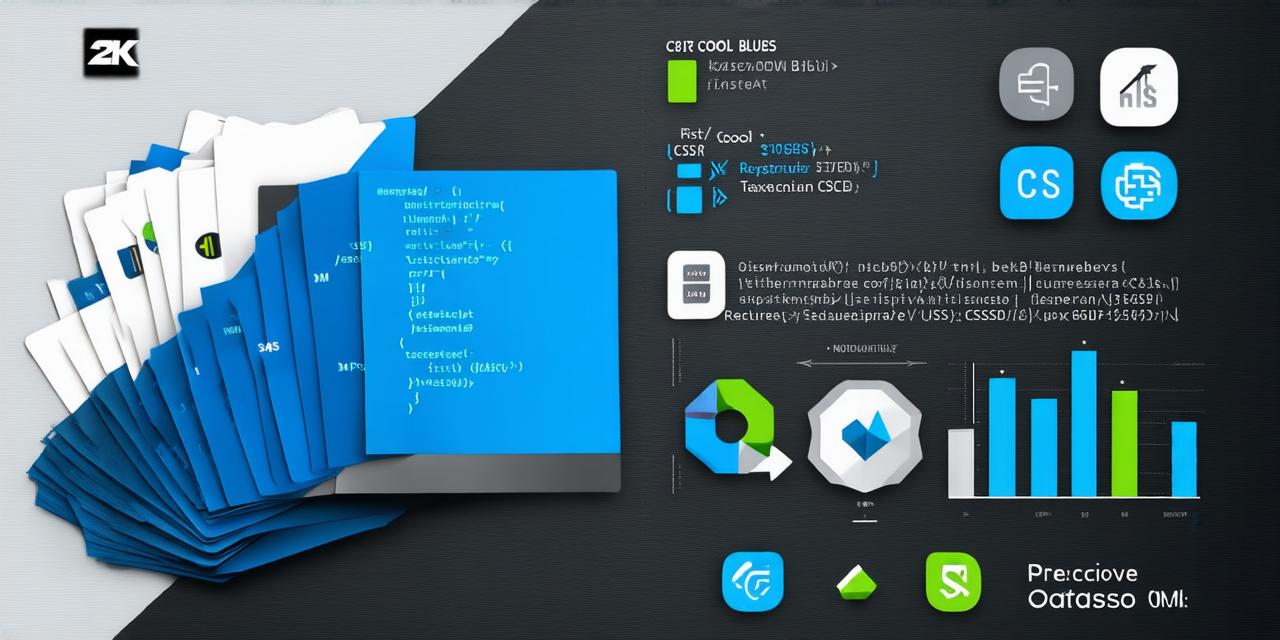Best coding language for web design?
BlogWeb design is a crucial aspect of any business’s online presence, as it determines how visitors interact with your website and whether or not they become customers.
With so many coding languages available, it can be overwhelming for beginners or experienced web designers alike to choose the best language for their specific needs and goals. In this comprehensive guide, we will explore the top coding languages used in web design and provide you with an informed decision based on your requirements.
1. JavaScript
JavaScript is a front-end programming language that allows developers to create interactive elements on a website. It is widely compatible with all major web browsers and can be used to add dynamic features like animations, form validation, and dropdown menus.
With the rise of popular libraries like React and Angular, JavaScript has become an essential language for many web designers looking to build responsive websites that provide a seamless user experience.
1. HTML5
HTML5 is the latest version of the Hypertext Markup Language (HTML) used to structure content on the web. It is a markup language that allows developers to create visually appealing and responsive websites.
HTML5 includes new features like video and audio tags, canvas for drawing graphics, and forms with input types like date and range sliders. With its flexibility and compatibility with all major browsers, HTML5 has become the go-to language for many web designers.
1. CSS3
CSS3 is a stylesheet language used to define the presentation of a website. It is used in conjunction with HTML and JavaScript to create visually stunning websites.
CSS3 includes new features like animations, transitions, and transforms that make it possible to create complex layouts and design elements without relying on JavaScript. With its focus on performance and compatibility with all major browsers, CSS3 has become a top choice for many web designers looking to create fast-loading and user-friendly websites.
1. PHP
PHP is a server-side programming language used to develop dynamic websites. It allows developers to create custom functions, interact with databases, and handle user authentication.
With its popularity among content management systems like WordPress and Drupal, PHP has become an essential language for many web designers looking to build dynamic websites that can be easily managed and updated by non-technical users.
1. Python
Python is a versatile programming language used for web development, data analysis, and machine learning. It is known for its simplicity and ease of use, making it a popular choice among beginners.
With its focus on readability and compatibility with web frameworks like Django and Flask, Python has become a top choice for many web designers looking to build scalable and maintainable websites.
1. Ruby
Ruby is a dynamic programming language used for web development, automation, and system administration. It is known for its simplicity and readability, making it a popular choice among beginners.
With its focus on productivity and compatibility with web frameworks like Ruby on Rails, Ruby has become a top choice for many web designers looking to build efficient and scalable websites.
1. Swift
Swift is a programming language used for developing mobile and web applications. It is known for its speed and performance, making it a popular choice among developers building high-performance apps.
With its focus on safety and compatibility with Apple’s ecosystem, Swift has become an essential language for many web designers looking to build cross-platform websites that can run smoothly on iOS and macOS devices.
Factors to Consider When Choosing a Coding Language for Web Design
When choosing a coding language for web design, there are several factors to consider, including your specific requirements, the level of complexity of your project, and your skill level and experience. Some of the key factors to consider include:
- Ease of Use: Choose a language that is easy to learn and understand if you have little or no programming experience.
- Compatibility: Ensure that the language you choose is compatible with your target platform, such as a particular web browser or operating system.
- Performance: Choose a language that provides fast loading times and high performance for your website, especially if you plan to include complex features like animations or interactive elements.
- Popularity: Choose a language that is widely used and supported by the community, as this will make it easier to find resources, tutorials, and support online when you encounter issues or need help with your project.
- Flexibility: Choose a language that is flexible enough to meet the evolving needs of your website over time. For example, if you plan to switch to a different content management system or add new features to your site in the future, you may need to choose a language that is compatible with a wide range of tools and platforms.
In conclusion, choosing the best coding language for web design depends on your specific requirements, goals, skill level, and experience. By considering factors like ease of use, compatibility, performance, popularity, and flexibility, you can make an informed decision that will help you build a website that meets your needs and provides an exceptional user experience.
